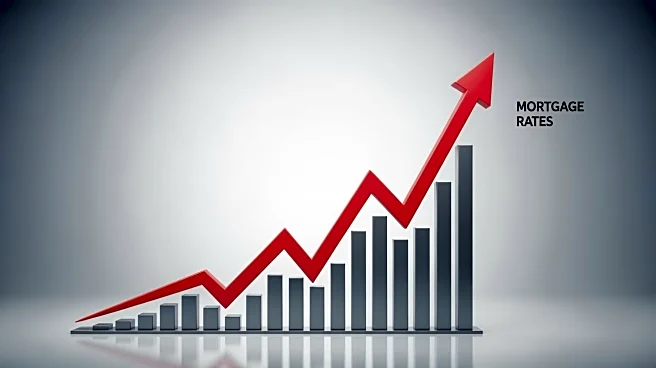What's Happening?
Mortgage rates have risen to near two-month highs following stronger-than-expected economic data. The 30-year fixed mortgage rate increased to 6.37%, close to the highest levels seen since early September.
The bond market, which influences interest rates, reacted to positive reports from ADP's employment tally and the services sector, both exceeding expectations. This led to a weakening in bonds and subsequent rate increases by lenders. Despite the rise, rates remain closer to the year's lows rather than the highs, indicating a shift since the Federal Reserve's meeting at the end of October.
Why It's Important?
The increase in mortgage rates can impact borrowers looking to secure loans, as higher rates translate to increased monthly payments. This development may deter potential homebuyers or those considering refinancing, as the cost of borrowing becomes less favorable. The bond market's sensitivity to economic data highlights the importance of monitoring such reports, as they can significantly influence interest rates. The recent rate changes reflect broader economic conditions and the Federal Reserve's monetary policy decisions.
What's Next?
Borrowers should remain vigilant about economic reports and Federal Reserve actions, as these factors can continue to affect mortgage rates. Lenders may adjust rates further based on upcoming data releases, potentially impacting borrowing costs. Homebuyers and those refinancing should consider locking in rates if favorable conditions arise, while staying informed about market trends and potential rate fluctuations.













